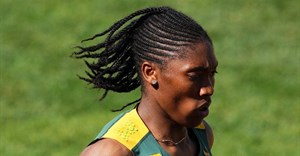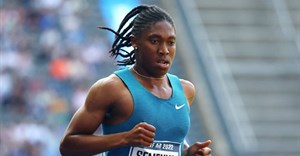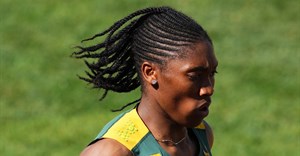
Subscribe & Follow
Jobs
- Senior Graphic Designer Johannesburg
- Advertising Specialist - Get It Magazine Durban Durban
- Advertising Sales Executive Sandton
- Media Sales Specialist Johannesburg
- Media Buyer/Planner Rosebank
- Junior/Mid-Level Video Editor Johannesburg
- Personal Assistant and Project Coordinator to CEO Cape Town
- SEO and Content Creator Intern Cape Town
- Media - Sales Manager - Digital or Broadcasting Exp Essential or Both Johannesburg
- Head of Performance Marketing South Africa
Media is failing Semenya

Mike Hurst, the Australian coach-turned-journalist, says that the information “fell into his lap” and he had no choice but to tell the story. Really?
Journos always have choices
Journalists always have choices. They balance the right of the public to know against the right of the individual to privacy. A central pillar of media ethics is to “do no harm.” The harm done by this leak is immeasurable.
Let us imagine for a moment that it is true that the athlete has external female organs, no womb but internal testicles for which she needs corrective surgery as this condition is potentially cancerous; something she has probably never been aware of. How would anyone feel learning these facts through second and third hand reports from a foreign newspaper rather than from a medical practitioner supported, perhaps, by a counselor?
Ironically, these facts alone do not necessarily even disqualify her.
Unless she took some illicit substance, Semenya is a female with a birth defect, simple as that, Dr. Myron Genel, a professor emeritus of pediatrics at Yale University is quoted as saying on Yahoo Sports News. He was part of a special panel of experts convened by the International Association of Athletics Federations (IAAF) in 1990 that helped end much, but not all, genetic gender testing.
“It's no different in a sense than a youngster who is born with a hole in the heart,” Genel said. “These are in fact birth defects in an area that a lot of people are uncomfortable with.”
What was to be benefited?
So what exactly was to be benefited by telling this story before 21 November 2009, when the IAAF will make its determination based on a variety of factors, not just what internal sex organs the young woman possesses?
Whenever a leak is made, one has to ask who made it and why. This information is said to come from impeccable sources within the IAAF. Could it be that someone in there who wants Semenya to be disqualified and judged by the media long before she gets judged by the experts deliberately planted the information? Has this not indeed been the import of recent coverage: to cast huge doubt and force her to retreat from her own profession?
Do some real investigative reporting
Instead of literally dressing Semenya up in stilettos as You magazine did, and now figuratively undressing her to determine her sex what the media needs to do is get out of the armchair and do some real investigative reporting. Among questions that have not been answered in recent coverage are:
- What exactly is the IAAF's checklist and weighting for determining sex?
- How transparent is this process? Can it be appealed?
- What is the role of the psychologist on the panel? Is there a particular way that a woman or a man thinks? What does this count for?
- If individuals have been raised as women, regardless of their physical make up, what does this count for?
- What distinction is made between men who pretend to be women and are caught out and women who have lived their lives as women and then are determined to be men? What procedures are in place for breaking this news, given the precedent of a Sri Lankan athlete who almost committed suicide after she was determined to be male and forced to surrender her medal?
- Is it possible that women athletes who have more feminine features could in fact have the same physical and chemical characteristics as those picked out for tests like Semenya? If so, how does the IAAF determine who to test and who not to test? Would it be fair to test every woman athlete?
- If Semenya is found to be male, will she be allowed to compete in male athletics? How does one square the fact that hers is not the highest female running record and that she would likely not shine at all as a male athlete?
- If there are indeed more than two sexes (some suggest there may be five), why are these shades of grey not catered for in international athletics, rather than committed to tests, the results of which are announced to the whole world and have devastating personal consequences?
Start asking wider questions
The media would also do well to start asking wider questions about the significance of the Semenya case for social change. We have gone from sensation to celebration to makeover to tragedy, like four seasons in fewer weeks. Have we learned anything in the process?
Sex (a biological given) and gender (society's expectations of women and men) are still being interchanged as though one is the politically correct form of the other, which it is not. To accept Semenya as a woman, we feel the urge to dress her up as we feel comfortable, not as she necessarily feels comfortable. Our stereotypes run so deep that we do not even recognise them for the blinders that they are.
In parliament, Semenya has been compared to Sarah Baartman: paraded in a 19th century circus until she tragically took her own life. In a fate possibly even worse, every detail of Semenya's private life has been paraded on the world stage by sports officials, media and politicians keen to make a buck, a scoop or to score a few political points. It's time to stop this modern-day slavery.

















